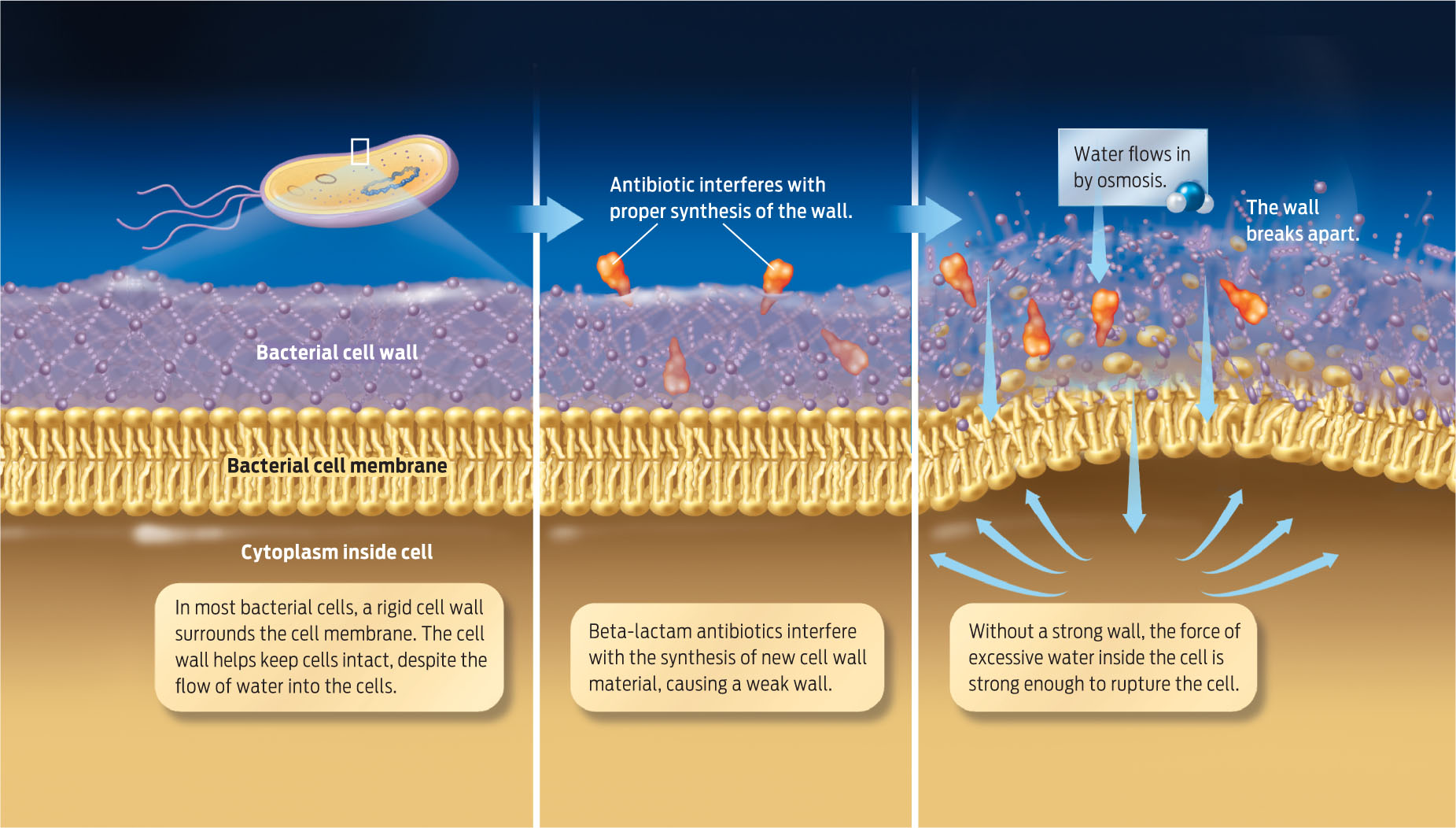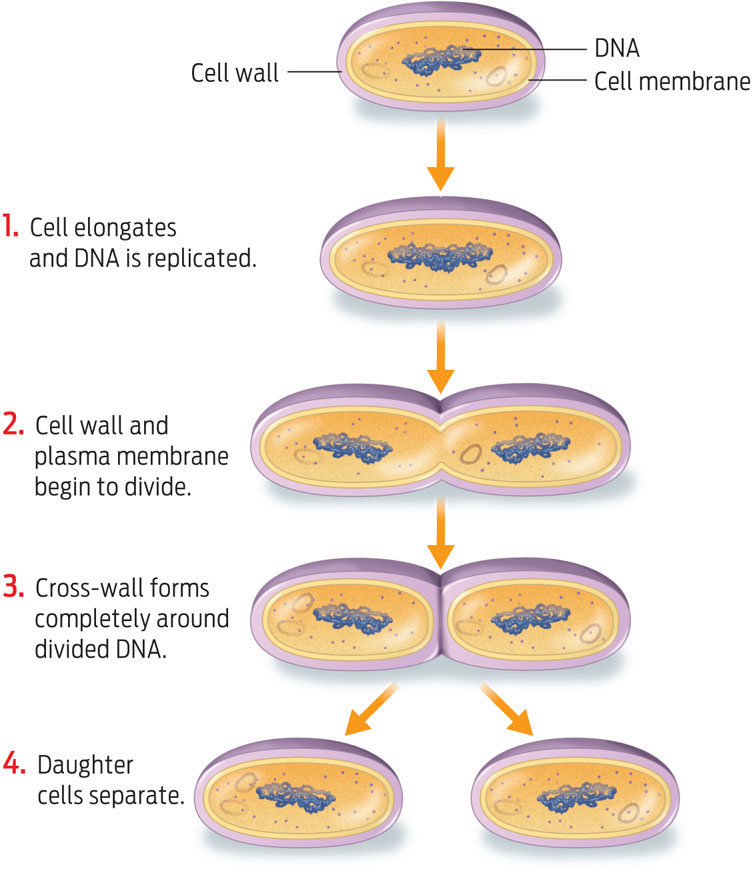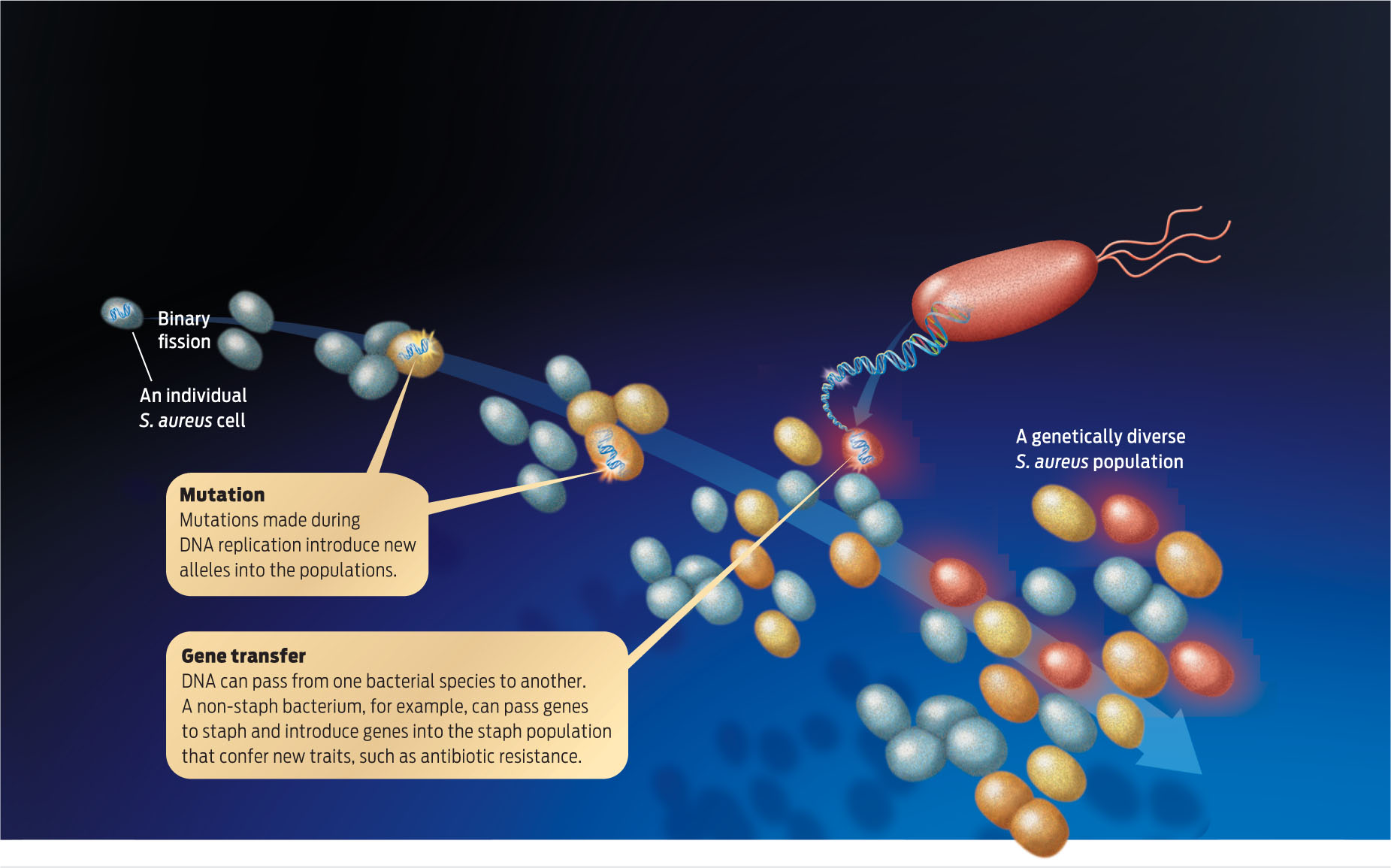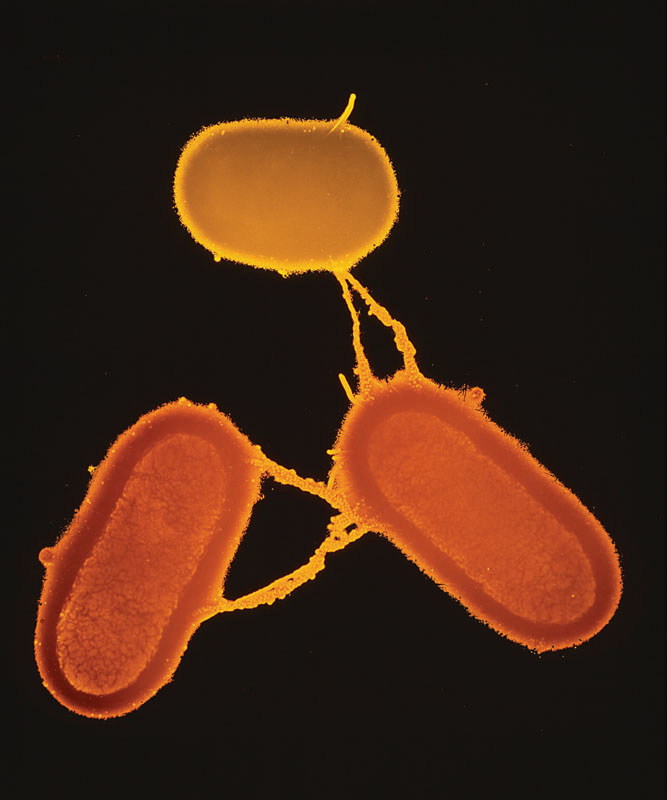ACQUIRING RESISTANCE
ANTIBIOTICS Chemicals that either kill bacteria or slow their growth by interfering with the function of essential bacterial cell structures.
Bacterial infections were a common cause of death before the 1940s, when antibiotics first became widely available. Antibiotics are chemicals that either kill bacteria or slow their growth by interfering with the function of essential bacterial cell structures. Since Alexander Fleming’s discovery of penicillin in 1928 (see Chapter 3), many additional antibiotics have been discovered or synthesized in the lab.
For decades, these antibiotics have been used to treat most common bacterial infections, including staph, and have saved thousands of lives. But almost immediately after antibiotics were introduced, bacteria that could survive antibiotics—drug-resistant bacteria—began to emerge. Within the last decade drug-resistant bacterial strains have become much more common. Most people infected with drug-resistant bacterial strains are still treatable, but they have fewer treatment options. And sometimes—as in Ricky Lannetti’s case—existing drugs are completely ineffective.
Drug-resistant strains of staph, for example, are typically resistant to an entire class of antibiotic drugs called the beta-lactams. Beta-lactams include penicillin and the cephalosporin antibiotics, such as methicillin and cephalexin. Beta-lactams are the most commonly prescribed class of antibiotics. They work by interfering with a bacterium’s ability to synthesize cell walls (INFOGRAPHIC 14.2).
Antibiotic medications are grouped into classes, one of which is called the beta-lactams. Beta-lactam antibiotics interfere with a bacterium’s ability to synthesize cell walls.

A variety of non–beta-lactam classes of antibiotics can treat MRSA infections, and vancomycin, a non-beta-lactam drug, is the antibiotic of choice when a serious MRSA infection is confirmed. But even vancomycin isn’t always effective; there are now staph strains resistant to vancomycin, too.
Ricky Lannetti did not respond to vancomycin. Nor did Rebecca Lohsen, the 17-year-old high school swimmer. She was diagnosed with MRSA 2 days after she was admitted to the hospital for pneumonia. But antibiotics were ineffective in controlling the MRSA that attacked her lungs and then her heart. Twelve-year-old Carlos Don, who skateboarded and played football, also did not respond to vancomycin; he, too, died.
BINARY FISSION A type of asexual reproduction in which one parental cell divides into two.
What’s behind this rise in drug-resistant bugs? Like all organisms, bacteria can acquire mutations when their DNA replicates during reproduction (see Chapter 10). These random mutations create new alleles in the bacterial population, including ones that may confer antibiotic resistance.
Bacteria reproduce asexually by a process called binary fission. Unlike sexual reproduction, in which gametes from two parents fuse, asexual reproduction does not require a partner. In binary fission, a single parental cell simply replicates its single chromosome, grows in size, and then splits into two daughter cells, each with a copy of the parental DNA. Each time DNA is replicated, however, there is a chance that genetic mutations will occur, and the new alleles will then be carried into each daughter cell. And because bacteria reproduce much more rapidly than other organisms—one generation of bacteria can double in as little as 20 minutes—they accumulate mutations at a relatively high rate. An entire population of bacteria that is genetically different from the original cell can arise very quickly (INFOGRAPHIC 14.3).
Bacteria reproduce through a process called binary fission. Binary fission is a form of asexual reproduction in which a single parent cell replicates its contents and then divides into two daughter cells. Note that each daughter cell inherits all its DNA from the single parent cell.

Mutation isn’t the only way that populations of bacteria can acquire new genetic variation. Bacteria can acquire new alleles, and even new genes, through a mechanism called gene transfer, in which pieces of DNA pass from one type of bacteria to another. (By contrast, populations of sexually reproducing organisms acquire additional genetic diversity by recombining parental chromosomes during meiosis and then mating with genetically distinct individuals; see Chapter 11) (INFOGRAPHIC 14.4).
Asexually reproducing bacterial populations become genetically diverse by accumulating mutations and by picking up genes from organisms of the same or different species.


Staph bacteria, for example, became resistant to drugs either by mutations in their own genes or by picking up “resistance” genes from other drug-resistant bacteria. The genetic changes ultimately altered bacterial proteins in ways that helped staph dodge antibiotic drugs. Specifically, the altered or acquired genes either code for proteins that can disable antibiotics, or they code for proteins with altered shapes to which antibiotics can no longer bind. Some bacteria produce enzymes called beta-lactamases that chew up beta-lactam antibiotics. Because different strains of bacteria have developed antibiotic resistance independently, several strains of genetically unique drug-resistant staph circulate through human communities at the same time.